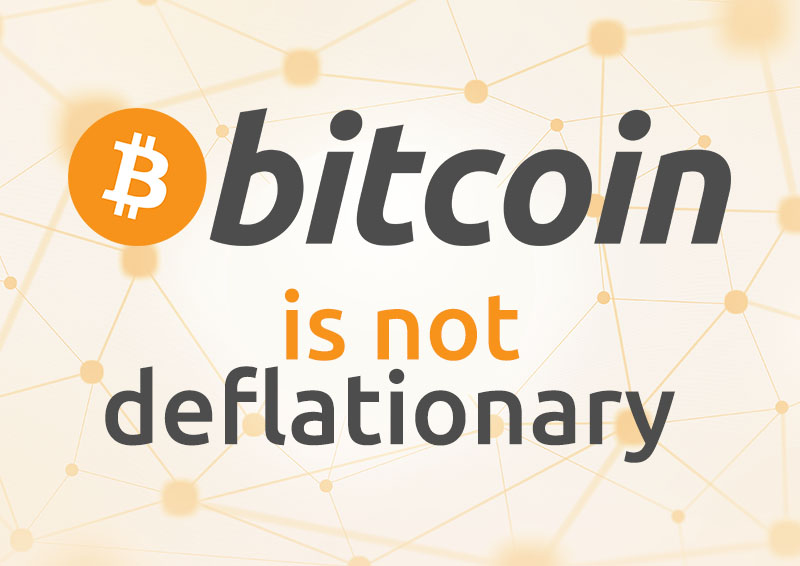Bitcoin is not deflationary, whether it is analyzed from a Keynesian point of view, or from the Quantity theory of money one.
According to the Keynesian model, deflation is the reduction of prices due to the reduction in demand, which causes the reduction of consumers’ purchasing power.
If we see bitcoin as a simple intangible asset – purchased with different monetary assets, eg dollars – we can see that today the demand remains high and its price tends to increase over time. Consequently it can be said that he does not suffer from deflation.
If we see it as a monetary asset (cash), we can only hypothesize its impact on the future if the demand for it becomes inelastic and bitcoin represents the medium of exchange par excellence. In this case, a deflation scenario could arise, but it is not known.
According to the Quantity theory of money, deflation occurs when production, but I would also say circulation, or the supply of new monetary units is such as not to satisfy demand or when monetary inflation goes to zero. Bitcoin has controlled but present inflation: the last satoshi will probably be released in 2140.
So the cases are two: either it will become deflationary when the inflation has gone, after the block 6930000 in which the subsidy of the miner will be equal to zero and the latter will only earn mining fee, or when the money supply will be lower than the demand. We are far from both hypotheses.
Even in these cases, however, the problems deriving from a deflationary monetary asset on the real economy would be limited, if not even avoided, by a unique characteristic of the Bitcoin Protocol: the divisibility tending towards infinity of its bitcoin asset.
The biggest problem caused by deflation, in fact, is not the theoretical consumption block – probable, in a system based exclusively on the Keynesian IS-LM model, unrealistic, if we follow the Austrian model based on a Hard Money system – but the lack of liquidity.
In Bitcoin, however, the possibility of splitting the units of value up to 8 decimal places onchain and up to n decimal digits on second layer (where n is a number tending to infinity) makes liquidity not actually a problem. We will go into this in a future article.
Sowhat kind of monetary asset does bitcoin represent?
I would say that bitcoin is a scarce monetary asset of disinflationary type, tending to deflation but not deflationary in fact.
Deflation vs disinflation is not only a semantic battle, but a conceptual one: if we let the idea pass that bitcoin is a deflationary asset, it is very unlikely that it can be used as a currency and unit of account, while the fact that it is a disinflationary asset allows us to explore the possibility of using a totally new monetary system, based on scarcity and consequent reserve of value, predictability of monetary inflation (given by halving and difficulty adjustment) and theoretically infinitedivisibility.
I invite you to explore the concepts just mentioned here, starting with this article: https://medium.com/@Conner_/stop-calling-bitcoin-deflationary-84462cb90345
________
Did you like this article?
Send me some sats!
Native Segwit BTC: bc1q070j920gc6j68x9k04cf4xccleyrhx34dmplpd
Don’t want to send me BTCs? I accept new jobs! I am looking for an additional job, possibly in Bitcoin, as a consultant, columnist or translator from English to Italian of apps or Bitcoin oriented articles to support my family. If you have something to offer, write to me at info@davidcoen.it. Thanks!

